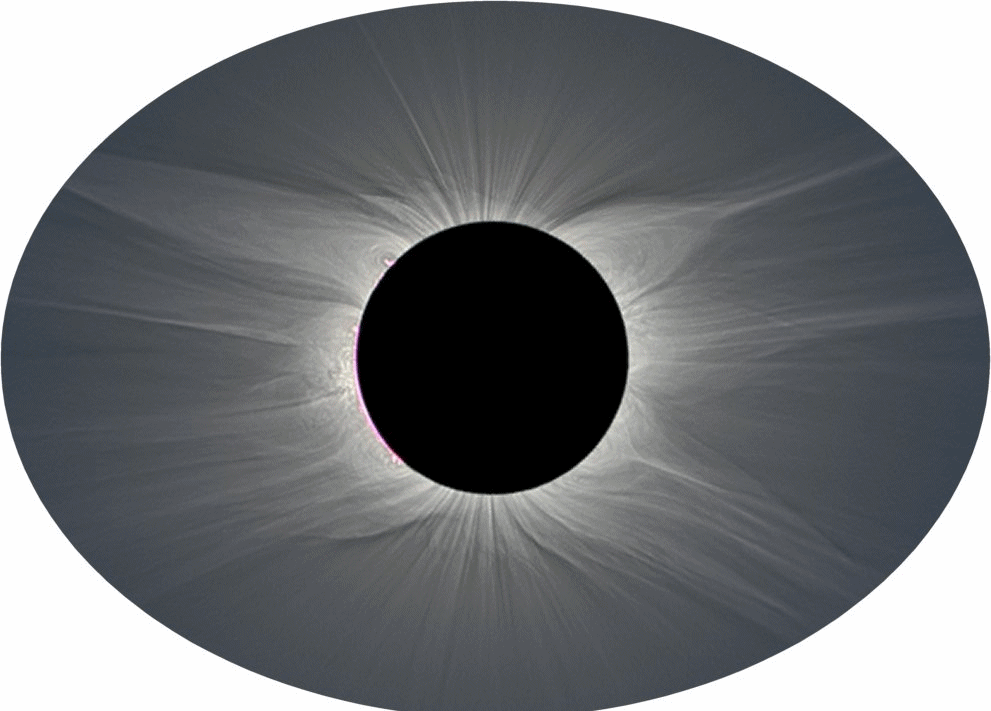If you have ever looked at photographs of total solar eclipses, you were undoubtedly struck by the glorious corona surrounding the moon-covered sun. If you look at many of these images you will likely notice that the corona has a shape and that that shape is not always the same. It changes over time. How come? To answer that we have to examine something else.
The sun is way too bright to look at directly but when properly filtered and magnified we usually see a fairly uniformly bright surface with occasional dark locations that we know as sunspots. Sunspots are locations of higher than average magnetic activity in the Sun’s top layer, the photosphere. They are hot but not as hot as the surrounding regions, hence the darker appearance. Well, the number of sunspots is not the same every day. It changes over time. In fact, it goes through a cycle of activity which has a period of about 11 years, 22 if you count the reversal of the Sun’s magnetic field. But for numeric purposes, it’s 11 years. So every 11 years the activity of the Sun as measured by sunspot count is approximately the same. But in between those 11 years, the number is very different. If today the Sun had a maximum number of sunspots, in 5 or 6 years it would have near zero. This is related to the activity of the solar magnetic field and, therefore, the shape of the corona.

The animation above contains the image of 5 different total solar eclipse coronas; one each from 2006, 2009, 2012, 2017, and 2023. As you can see, the shape of the corona varies considerably. What shape will the April 8, 2024 corona have. My guess is not that different from 2023. Time will tell. More information about sunspot cycles is available here, Intro to Astronomy Lecture 15
The images in this animation are not mine. Four of the five were processed by Miloslav Druckmüller and one taken and processed by Fred Espenak.